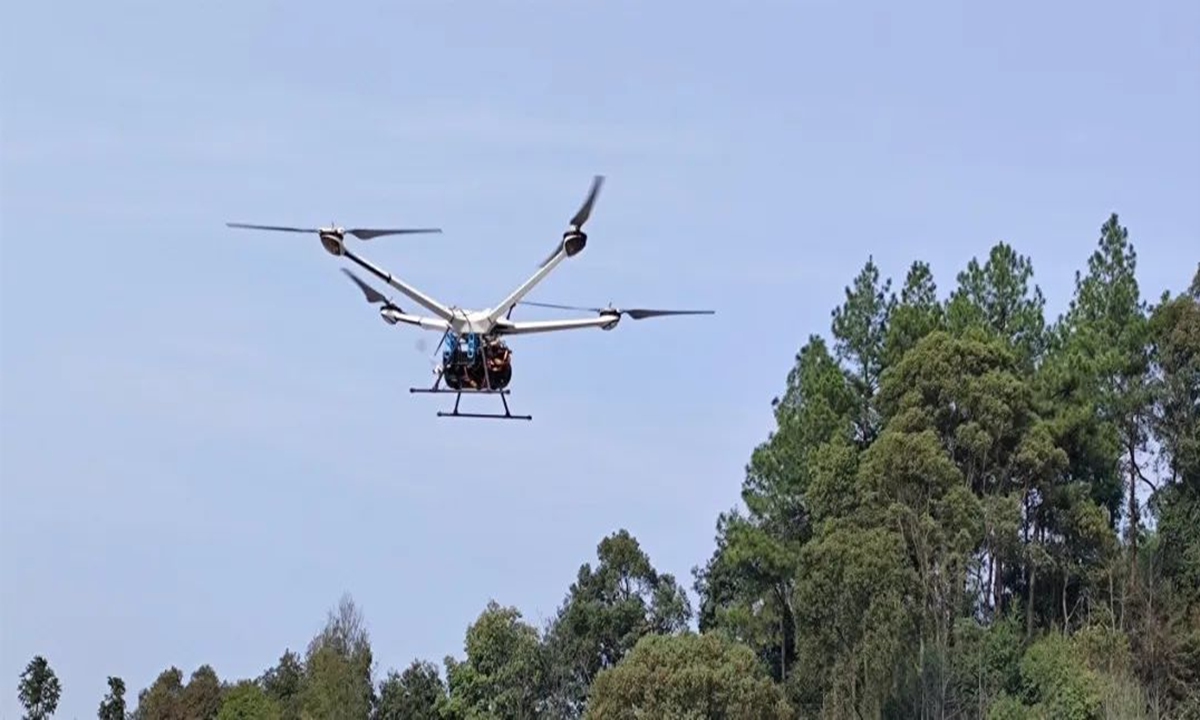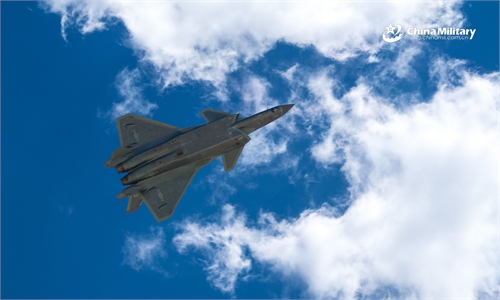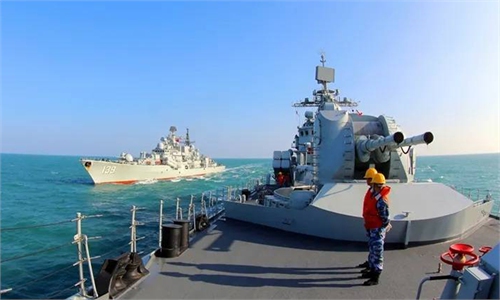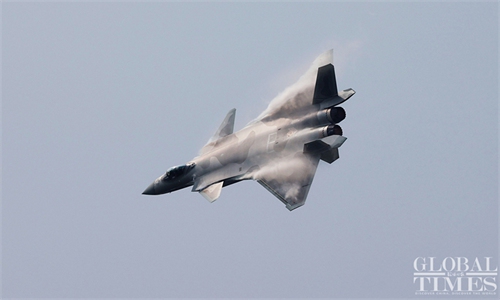China's plateau-operable drone makes 1st flight with hydrogen power, extends endurance

An AR-20 variable pitch multi-rotor drone equipped with a hydrogen battery conducts a test flight on March 13, 2022 at an undisclosed location. Photo: WeChat account of AVIC China Helicopter Research and Development Institute
The AR-20, a multi-rotor drone domestically developed by China for security surveillance, border patrol and anti-terrorism missions, has spawned a hydrogen-powered variant that recently made its maiden flight.
The successful test proved that the agile, plateau-operable light drone has greatly extended its endurance thanks to the new-energy battery, the aircraft's maker said.
Developed by China Helicopter Research and Development Institute, a subsidiary of the state-owned Aviation Industry Corp of China, a major contractor of the Chinese military, the AR-20 is a 20-kilogram-class variable pitch multi-rotor drone that was originally equipped with a lithium battery, the institute said in a statement released on its WeChat account on Thursday.
During the test flight on March 13, a hydrogen-powered battery with a 12-liter gas cylinder under 35 megapascals replaced the conventional lithium battery, the statement said.
With the new power source, the AR-20 conducted functional checks, test flights with different takeoff weights, test flights under typical conditions and a long-endurance hovering test, the institute said, noting that during the hovering test, the drone displayed an endurance of three hours and 12 minutes.
By comparison, the drone has an endurance of more than an hour carrying five kilograms of payload with the conventional lithium battery, the institute said.
The test flight demonstrated that the output from the hydrogen-powered battery can meet the demands of the AR-20's flight, and it can greatly extend the drone's endurance, bringing significant value to the AR-20's applications in both military and civilian fields as well as its own capabilities, according to the statement.
Aside from the power source, the drone has an integrated fuselage structure made of composite materials and a highly effective multi-rotor system, giving it significant advantages over its competitors, including rapid deployment, low noise, good wind resistance, outstanding performance in plateau regions and high efficiency, the statement read.
With longer endurance, the drone can continue its mission in a longer time before returning for a recharge, and this is particularly meaningful in scenarios like patrol missions along high-altitude border regions, where the complex terrains and the lack of oxygen make it difficult for humans to carry out patrols on a regular basis, a Beijing-based military expert who requested anonymity told the Global Times on Sunday.
The first test flight was just a start. It needs to undertake more test flights under different environments and is likely to receive more modifications if the hydrogen-powered variant is ready for operation, the expert said.
China has a lot of new technologies under development for drones, and it is worth observing which ones will eventually be used on a large scale, which involves many factors including mission requirements, reliability and affordability, the expert noted.




